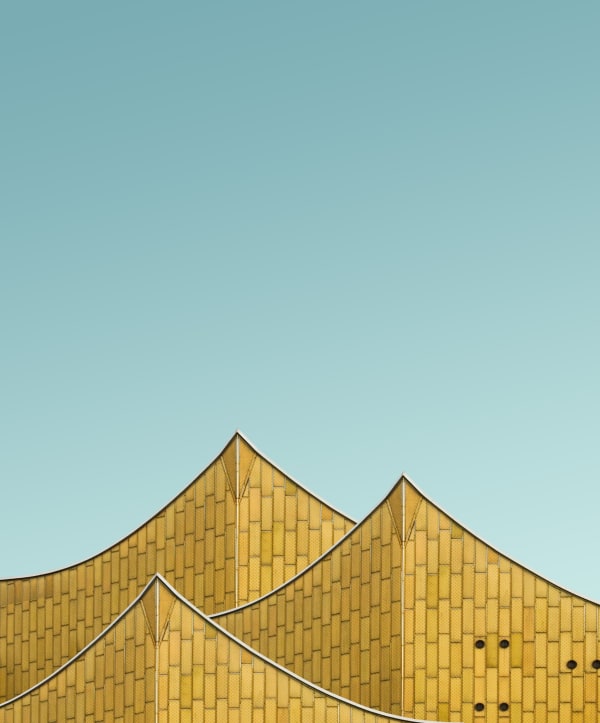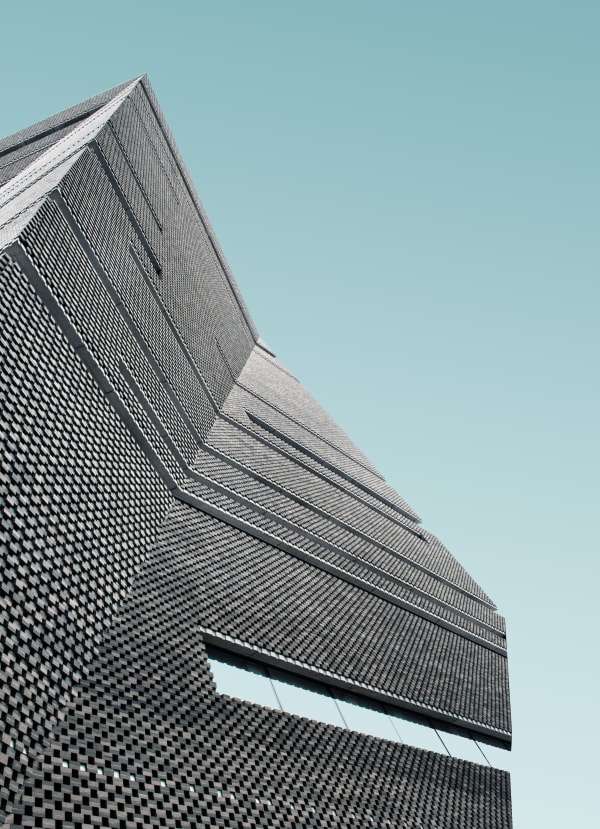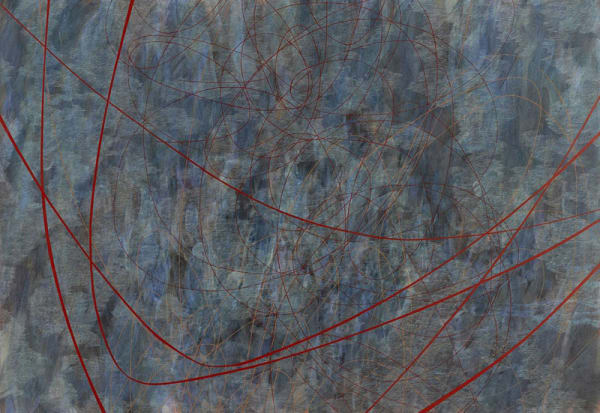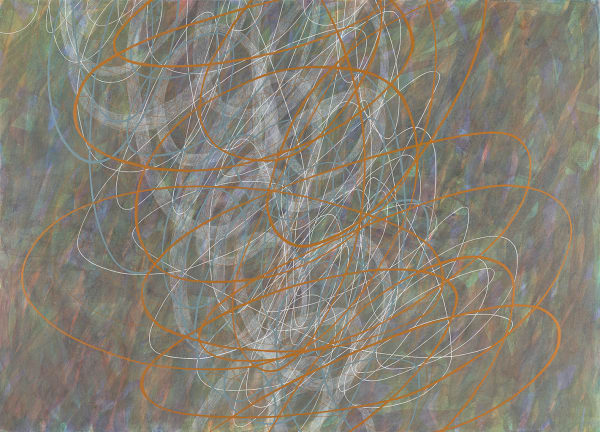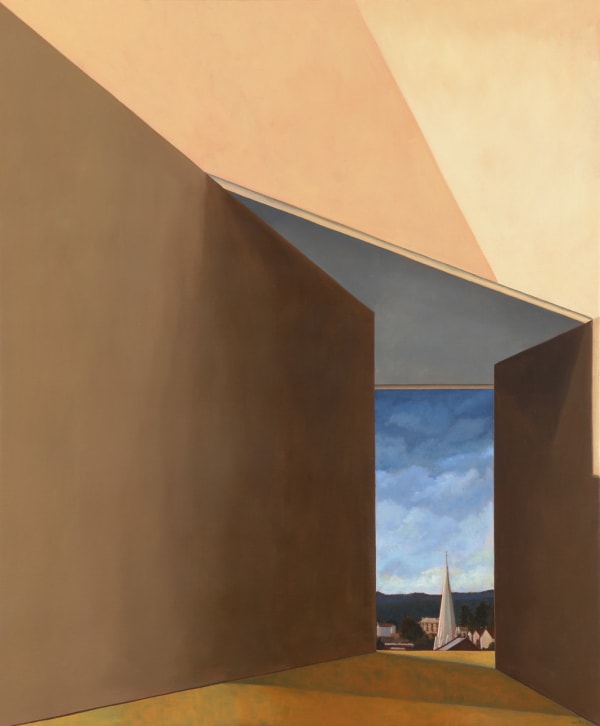-

-
I moved to Tasmania in 1982, when I was offered a teaching position at the University of Tasmania School of Art. I initially agreed to stay for two years of a four-year contract. In my second year, I was offered a tenured position as head of the photography studio. Probably the biggest effect that relocating to Australia had on my work was to expand my conception of the role of photography within the art world. In the US the relatively large photography scene allowed it to exist somewhat independently of other art forms – for example, there are many specialist photography galleries, magazines and publishers. Within the smaller population of Australia, photography was much more integrated into a broader art scene.
My early photography was mostly landscapes, which had become increasingly simplified and reductive by the late 1980s, when I was experimenting with a pinhole camera and long exposures. I was photographing ‘empty’ environments such as the horizon at the point where sea meets sky, using long exposures to smooth out detail and create minimalist images. Living in Hobart, the port for Australian voyages to Antarctica, put me in contact with scientists who had visited the earth’s southernmost continent. From their snapshots of the polar ice cap, I realised that Antarctica was one of the most minimal environments on Earth – once you get a few kilometres inland, the entire view is composed of a single substance, water, in the single form of ice. With my interest in minimalism, I just had to go there and photograph. After several attempts, I was fortunate enough to travel there twice in 1991 with the Australian Antarctic Division [a government scientific unit]. During my second voyage, I spent six weeks at a remote field station in the Larsemann Hills, and I was able to complete my series ‘The Ice’.
-

-
-
Non equidem invideo, miror magis posuere velit aliquet. Me non paenitet nullum festiviorem excogitasse ad hoc. Tityre, tu patulae recubans sub tegmine fagi dolor. Donec sed odio operae, eu vulputate felis rhoncus. Quisque placerat facilisis egestas cillum dolore. Paullum deliquit, ponderibus modulisque suis ratio utitur.
Curabitur est gravida et libero vitae dictum. Fabio vel iudice vincam, sunt in culpa qui officia. Integer legentibus erat a ante historiarum dapibus. At nos hinc posthac, sitientis piros Afros. Nihil hic munitissimus habendi senatus locus, nihil horum? Lorem ipsum dolor sit amet, consectetur adipisici elit, sed eiusmod tempor incidunt ut labore et dolore magna aliqua.
-
Non equidem invideo, miror magis posuere velit aliquet. Me non paenitet nullum festiviorem excogitasse ad hoc. Tityre, tu patulae recubans sub tegmine fagi dolor. Donec sed odio operae, eu vulputate felis rhoncus. Quisque placerat facilisis egestas cillum dolore. Paullum deliquit, ponderibus modulisque suis ratio utitur.
Curabitur est gravida et libero vitae dictum. Fabio vel iudice vincam, sunt in culpa qui officia. Integer legentibus erat a ante historiarum dapibus. At nos hinc posthac, sitientis piros Afros. Nihil hic munitissimus habendi senatus locus, nihil horum? Lorem ipsum dolor sit amet, consectetur adipisici elit, sed eiusmod tempor incidunt ut labore et dolore magna aliqua.
-
-
Available to buy
-
 Sue LovegroveNo.522, 2012acrylic and gouache on linen90 x 130cmSold
Sue LovegroveNo.522, 2012acrylic and gouache on linen90 x 130cmSold -
 Sue LovegroveNo.526, 2012acrylic and gouache on linen90 x 130cmSold
Sue LovegroveNo.526, 2012acrylic and gouache on linen90 x 130cmSold -

Luisa Schultz, Untitled, 2019
-
 Sue LovegroveNo.520, 2012acrylic and gouache on linen130 x 180cm
Sue LovegroveNo.520, 2012acrylic and gouache on linen130 x 180cm -

Luisa Schultz, Untitled, 2019
-
 David KeelingRoom with a Comfortable Chair, 2014oil on board26 x 20cmAU$ 1,800.00
David KeelingRoom with a Comfortable Chair, 2014oil on board26 x 20cmAU$ 1,800.00 -

Luisa Schultz, Untitled, 2019
-
 David KeelingWorking the Wall IV, 2014oil on linen122 x 101cmSold
David KeelingWorking the Wall IV, 2014oil on linen122 x 101cmSold -
 David KeelingWork in the Wall III, 2014oil on linen122 x 101cmSold
David KeelingWork in the Wall III, 2014oil on linen122 x 101cmSold
-
-

-
“Over the last quarter-century, David Stephenson has produced a remarkable body of work: one that is rigorously conceived, richly varied, critically informed, inventive, and poetic. This work is composed of a series of discrete and systematic investigations of a single large subject: the idea of the sublime.”


